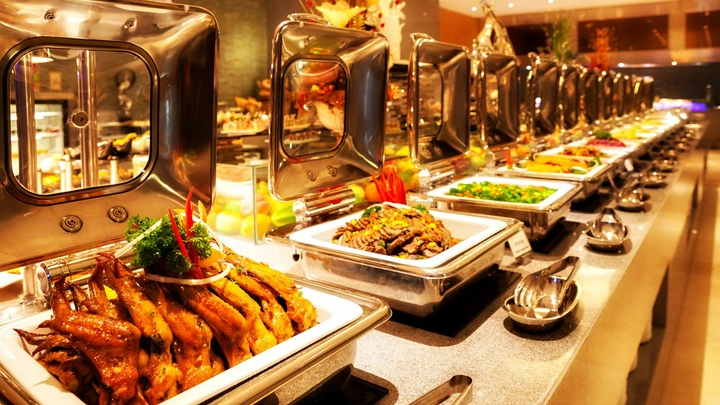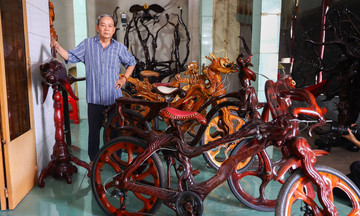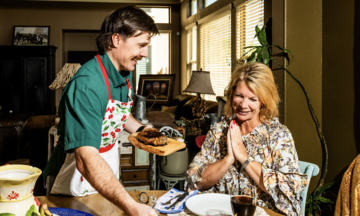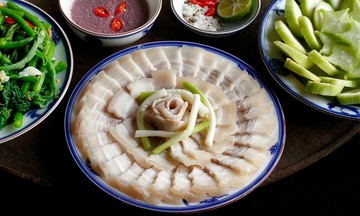Japanese economist Tsukazaki Kimiyoshi explains that the secret lies in cost structure and business strategy. In the food industry, costs are divided into two groups: fixed (rent, salaries, equipment) and variable (ingredients).
For example, a set meal in Japan costs 1,500 yen, with ingredients costing around 500 yen. The restaurant has 1,000 yen left for fixed costs. Once the number of customers exceeds the break-even point, each additional customer brings in almost pure profit.
 |
A buffet in the US. Photo: The Atlantic |
A buffet in the US. Photo: The Atlantic
This principle also applies to buffets. A customer pays 3,000 yen, eats the equivalent of three set meals, and the restaurant still has about 1,500 yen. This means that even those with the biggest appetites rarely hurt the restaurant's bottom line, as long as ingredient costs are well managed.
Moreover, buffets have distinct advantages: customers serve themselves, saving on staff and allowing for faster table turnover. Chefs cook in large batches, reducing errors and lowering costs. Ingredients are purchased in bulk at lower prices, minimizing waste. The biggest risk for buffets isn't big eaters, but empty seats because fixed costs continue regardless of customer volume.
A key feature of buffets is the high degree of self-service. Customers serve themselves, even participating in the cooking process tableside at hot pot and barbecue restaurants.
"Customers don't come to compete in an eating contest, but to enjoy selecting their favorite dishes," says Kerry Kramp, CEO of the Sizzler buffet chain. For those with hearty appetites, restaurants rely on the law of averages to offset costs. In a large group, one person might eat a lot, while others eat less.
Sizzler, a major buffet chain in the US since the 1990s, has recently scaled back its buffet model, retaining only the AYCE (all you care to eat) salad bar. Some items like steak and ribs are still occasionally offered buffet-style.
The experience of Ovation Brands, which owns over 330 buffet restaurants in the US, highlights another crucial factor: waste management. The company filed for bankruptcy twice, but by reducing portion sizes, tracking weekly waste data, and forecasting seasonal demand, it has now achieved its best revenue in seven years.
Michelle Gessner, Senior Vice President of Ovation Brands, explains, "Any item can have between 5% and 25% waste. We used to cook large pans of fried chicken, but now we prepare smaller batches to reduce waste."
Weekly, the system collects waste data, inputting it into software to model seasonal trends and predict customer volume. This allows them to anticipate the need for more seafood on weekends, the popularity of salads at the beginning of the year, and the consistently high demand for meatballs and fried chicken.
Broadly speaking, buffets succeed by sharing fixed costs, managing variable costs wisely, and optimizing processes. This model doesn't fear big eaters; on the contrary, more customers mean more profit.
For diners, the key is moderation. The best value comes from leaving satisfied, having enjoyed a delicious and comfortable experience, rather than feeling overstuffed.
Bao Nhien (The Atlantic/The Gold Online)












